INSTRUCT
SOME CONTENTS ON LIVESTOCK AND POULTRY DISEASE PREVENTION AND CONTROL
: I. GUIDELINES FOR PERFORMING ADMINISTRATIVE WORK
When a dangerous infectious epidemic occurs in animals or a disease is transmitted from animals to humans, with a confirmed diagnosis by a competent authority, the People's Committee at the commune level must urgently organize the implementation of the following administrative tasks:
1. Animal disease prevention plan
Develop and promulgate an Animal Disease Prevention Plan for the types of diseases and infected animals occurring locally (For example: African swine fever, Lumpy skin disease, Avian influenza, Foot and mouth disease, Rabies in dogs and cats...) , which includes full tasks, solutions, and resources to serve the disease prevention work.
2. Supplies, chemicals, vaccines and areas for destroying livestock and poultry
- Organize inspection and review of the quantity of vaccines, chemicals, tools, supplies, protective gear, vaccine preservation tools (refrigerators, insulated boxes), protective gear, boots... available in the locality to serve the epidemic prevention work. If there is a shortage, urgently organize the purchase, repair, and supplement to serve the work.
- Prepare areas for the destruction of dead livestock and poultry.
3. Issuing a Decision to declare an animal epidemic
When all conditions for declaring an animal epidemic are met as prescribed in Clause 2, Article 27 of the Law on Veterinary Medicine, the Chairman of the People's Committee at the commune level shall issue a Decision to declare an epidemic of terrestrial animals with the following procedure:
- Conditions for declaring animal diseases
+ There is an outbreak of an animal disease on the List of animal diseases that must be declared and has a tendency to spread rapidly over a large area or a new infectious agent is discovered.
+ There is a diagnosis conclusion confirming that the disease is on the List of animal diseases that must be declared as epidemics or a new infectious agent by a competent authority for diagnosing and testing animal diseases.
- Epidemic declaration: Upon request of the management agency, performing veterinary duties at the commune level, the Chairman of the People's Committee at the commune level decides to declare an animal epidemic when there are sufficient conditions for epidemic declaration and the epidemic occurs within the management area. The content of the declaration of terrestrial animal epidemic includes:
+ Name of animal disease or name of new infectious agent; species of animal infected;
+ Time of animal epidemic or time of discovery of new infectious agent;
+ Epidemic areas, epidemic-threatened areas, buffer zones;
+ Measures to prevent and control animal diseases.
4. Establishment of a Steering Committee for Animal Disease Prevention
When the locality has declared an animal epidemic in the locality, the People's Committee at the commune level shall issue a Decision to establish a Steering Committee for Animal Disease Prevention and Control at the commune level in accordance with the provisions of Decision No. 16/2016/QD-TTg dated April 29, 2016 of the Prime Minister on the establishment and organization of activities of Steering Committees for Animal Disease Prevention and Control at all levels ( in case the locality has previously established a Steering Committee, review and complete the members). Organize a Steering Committee meeting and assign tasks to members of the Steering Committee.
5. Conduct periodic and ad hoc disease reporting
Pursuant to the direction of the Ministry of Agriculture and Environment in Circular No. 07/2016/TT-BNNPTNT dated May 31, 2016, when an epidemic occurs, localities must strictly implement the periodic and ad hoc reporting regime as follows:
- Ad hoc reporting: When there are cases of animals getting sick or suspected of having an infectious disease, the Economic Department, the Public Service Center/Agricultural Service Center of the commune promptly assign specialized staff to organize inspection, verification, and guide breeders to apply initial disease prevention measures; at the same time, promptly report to the People's Committee at the commune level, the Department of Animal Husbandry and Veterinary Medicine of the province. for guidance and handling.
Daily report updated information on the outbreak, local anti-epidemic measures implemented to the Provincial Department of Animal Husbandry and Veterinary Medicine according to the form prescribed in Circular No. 07/2016/TT-BNNPTNT dated May 31, 2016 (including holidays) to synthesize reports to the Provincial People's Committee, Department of Agriculture and Environment, reporting time from the date of outbreak until the end of the epidemic ( with attached Epidemic Reporting Form ).
- Periodic reporting: Communes, wards and special zones direct specialized agencies and units to periodically report to the Department of Agriculture and Environment (through the Department of Animal Husbandry and Veterinary Medicine) for synthesis and reporting to competent authorities.
+ Every week , before 10:00 a.m. on Tuesday, report on the animal disease situation, payment of disease prevention support funds in the locality and related contents.
+ Every month before the 15th , summarize reports on the epidemic situation and results of epidemic prevention in the locality.
6. Issue a Decision to declare the end of animal epidemics
a) When ensuring the conditions for declaring the end of an animal epidemic as prescribed in Clause 1, Article 31 of the Law on Veterinary Medicine and Article 11 of Circular No. 07/2016/TT-BNNPTNT dated May 31, 2016 of the Ministry of Agriculture and Rural Development, including:
+ Within the prescribed time limit for each disease, from the date the last sick animal dies, is destroyed, compulsorily slaughtered or recovers, no animal is sick or dies from the declared animal disease;
+ Have vaccinated or applied other mandatory disease prevention measures for animals susceptible to animal epidemics in epidemic areas or areas threatened by epidemics, specifically: have vaccinated animals susceptible to declared epidemics at a rate of over 90% of animals subject to vaccination in epidemic areas and over 80% of animals subject to vaccination in areas threatened by epidemics or have applied other mandatory disease prevention measures for animals susceptible to diseases in epidemic areas or areas threatened by epidemics according to the instructions of the management agency, performing veterinary tasks;
+ Implemented hygiene, disinfection and sterilization measures to ensure veterinary hygiene requirements for epidemic areas and areas threatened by epidemics;
+ There is a written request for declaration of the end of an animal epidemic from the veterinary management agency and it is assessed and recognized by the veterinary management agency at a higher level.
b) The Chairman of the People's Committee at the commune level issues a Decision to declare the end of an epidemic in animals within the management area.
Note: The person with the authority to declare an animal epidemic has the authority to declare the end of an animal epidemic when all the conditions according to regulations are met.
II. GUIDELINES FOR PROFESSIONAL WORK
1. Animal disease prevention
a) Regularly monitor the disease situation in livestock herds, promptly detect livestock showing signs of infectious diseases and implement disease prevention measures according to regulations, not allowing the disease to spread widely;
b) The livestock breeding area must be separate from the human residence; the livestock breeding area, tools and means used in livestock breeding must be regularly cleaned, disinfected, sterilized, and have effective measures to destroy intermediate hosts... periodically and after each breeding period; the livestock breeding area must follow local planning or be permitted by a competent authority;
c) Water sources for livestock farming must ensure quality according to regulations; waste from livestock farming must be treated before discharge to ensure veterinary hygiene and according to regulations of law on environmental protection;
d) Breeding animals must be healthy, have a clear origin, and be fully vaccinated against dangerous infectious diseases. Priority must be given to selecting breeding animals from certified disease-free breeding facilities... according to the provisions of the law on livestock breeds; feed used in breeding must ensure disease safety, veterinary hygiene, and comply with the provisions of the law on animal feed;
e) Animals must be vaccinated against dangerous infectious diseases as required by the veterinary management agency;
f) Organization and implementation of livestock farming must ensure and maintain full and synchronous biosafety livestock farming measures according to the instructions of the Ministry of Agriculture and Environment.
2. Disease surveillance
a) Active monitoring
- Pet owners must monitor the disease situation in their livestock daily. In case of detecting animals suspected of being sick or dying of unknown causes, it is necessary to promptly isolate healthy animals from sick or dead animals and immediately report to the village or team leader; the village or team leader is responsible for reporting to the People's Committee at the commune level (through the Economic Department, Public Service Center/Agricultural Service Center) ;
- The People's Committee at the commune level directs the Economic Department, the Public Service Supply Center/Agricultural Service Center, the Village Chief, the Team Leader... to regularly and continuously monitor the dangerous disease situation in livestock herds (buffalo, cow, pig, goat, dog, cat, poultry...) at households and breeding facilities, especially for newly introduced livestock, livestock in areas with old epidemic outbreaks, and high-risk areas as determined by specialized veterinary management agencies.
b) Passive monitoring:
Upon receiving information about cases of sick or suspected animals with dangerous infectious diseases such as Foot and Mouth Disease, Avian Influenza, African Swine Fever, Rabies, Lumpy Skin Disease in cattle, etc., and animals dying of unknown causes from villages and residential groups, report to the Economic Department, Public Service Supply Center/Agricultural Service Center to organize inspection, verification, and investigation of the cause of the disease, and at the same time take samples, send them for testing to determine the cause (if necessary) and implement disease prevention and control measures according to regulations.
3. Outbreak investigation and reporting regime
a) Regarding the work of collecting information on outbreaks
Upon receiving information about cases of sick animals, suspected of being infected with dangerous infectious diseases such as Foot and Mouth Disease, Avian Influenza, African Swine Fever, Rabies, Lumpy Skin Disease in cattle, etc., animals dying of unknown causes, the People's Committee at the commune level shall direct the Economic Department, the Public Service Supply Center/Agricultural Service Center to urgently coordinate with the authorities at the commune, ward, and special zone levels to organize inspections and collect information about the outbreak. The contents of the inspection and collection of information about the outbreak include the following:
- Collect initial information about the outbreak:
+ Species of animals that are sick, suspected of being sick or have died of unknown causes; number of sick, suspected of being sick or dead animals/total herd; age; date of detection of sick, suspected of being sick or dead animals; clinical symptoms, external and internal lesions of sick animals (if any); results of use of veterinary drugs, vaccines, chemicals; implementation of biosafety measures for livestock farming ( barns; origin: breeding animals, feed, semen; management of humans, harmful animals; materials for livestock farming; sanitation and disinfection program for livestock farming areas, measures to destroy harmful animals, etc.) by livestock owners; preliminary conclusion on the cause of the disease;
+ Compliance with declaration of livestock activities to local authorities;
+ Number of households raising livestock and total herd of livestock susceptible to the disease or of the same species as livestock infected with the disease, suspected of being infected with the disease or dying of unknown causes in the village or hamlet where the disease outbreak occurs;
+ Vaccination results for susceptible livestock ( for dangerous infectious diseases, mandatory disease prevention measures must be applied by vaccination for livestock according to regulations ) in the villages and hamlets where disease outbreaks occur.
- Report the results of the outbreak investigation, assess and forecast the epidemic situation in the coming time, propose measures to prevent and control the epidemic;
+ In addition, in case of detecting sick or dead animals suspected of having diseases transmitted from animals to humans such as Avian influenza, Rabies in cats and dogs..., the Economic Department, the Public Service Supply Center/Agricultural Service Center shall advise the People's Committee at the commune level to establish an investigation team to handle the outbreak according to the provisions of Joint Circular No. 16/2013/TTLT-BYT-BNN&PTNT between the Ministry of Health and the Ministry of Agriculture and Rural Development on guidelines for coordination in preventing and controlling diseases transmitted from animals to humans.
* Note : Provincial and commune-level officials and civil servants assigned to coordinate inspection and collection of initial information at livestock facilities and households need to make inspection and verification records; the records need to show all contents of the initial investigation and collection of information about the outbreak, and the measures taken to handle the outbreak.
b) Diagnosis and determination of the cause of the disease
- After completing the collection of information on the epidemic situation, the Economic Department, the Public Service Supply Center/Agricultural Service Center will conduct inspections and diagnoses based on symptoms and lesions (inside and outside) of livestock to determine the cause of the disease. If necessary, samples will be taken for testing to accurately determine the cause of the disease. Particularly for Foot and Mouth Disease in cattle and pigs, although there are typical external symptoms, it is necessary to take samples for testing to determine the type of virus causing the disease in order to select and use effective vaccines to prevent the disease.
- At the same time, urgently guide and coordinate with localities to implement initial epidemic prevention work: organize isolation of healthy livestock from sick livestock; isolate and zone epidemic areas; disinfect the entire livestock area of households with sick livestock and neighboring households (if any) ; guide organizations and individuals with animals suspected of being sick to implement regulations on epidemic prevention according to regulations; urgently organize the destruction of dead and sick livestock (untreatable ).
* Some requirements in autopsy and sampling:
+ For those performing autopsies and diagnosing diseases : Those performing autopsies and sampling must have expertise in veterinary medicine and biology; be trained in sampling techniques, and be fully equipped with protective gear such as: clothes, gloves, masks, boots, glasses, etc. to ensure human safety and prevent the spread of disease.
+ For specimens: Specimens must be packaged, preserved, and transported in accordance with the regulations in QCVN 01-83:2011/BNNPTNT and sent to the laboratory designated by the Department of Animal Health. When collecting specimens, the person performing the sampling must fill in all information in the Sampling Record, the Examination Record, and the Specimen Sending Form (if any) according to regulations.
+ Handling of dead animals after sampling: For animals that die of unknown causes due to suspected infectious diseases, before necropsy and sampling, it is necessary to dig a disposal pit with the prescribed size. Bring the animal to be necropsied and sampled to the mouth of the pit and place a pad underneath to avoid spilling blood and secretions into the environment; after necropsy and sampling, carry out the disposal ( animals to be necropsied and sampled and protective clothing and equipment, etc. ), disinfect the sampling tools; and at the same time, spray disinfectant chemicals to disinfect the sampling area according to the prescribed process.
4. Handling animal outbreaks
a) When conditions for declaring an epidemic are not sufficient, measures to prevent and control animal diseases need to be implemented, specifically:
- Clean, disinfect, and sterilize barns, areas where sick animals are grazed, vehicles and tools used in animal husbandry, waste, and traffic points leading to epidemic areas and outbreak areas according to the instructions of the management agency, and perform commune-level veterinary tasks;
- Organize disease prevention by vaccination or apply other mandatory disease prevention measures for animals susceptible to animal epidemics; treat, compulsorily slaughter animals or destroy sick animals and animal products carrying pathogens according to the instructions of the management agency, and perform commune-level veterinary tasks;
- Restrict unauthorized people from entering places where animals are sick or dead; restrict people from entering epidemic areas; implement disease prevention measures for animals according to regulations;
- Restrict slaughtering, bringing into, taking out or circulating in areas where there are epidemics of animals susceptible to animal diseases and their animal products.
b) When a Decision to declare an animal epidemic has been issued
First: Organize and implement epidemic prevention measures in epidemic areas:
- Determine the boundaries of epidemic areas, threatened epidemic areas, and buffer zones; place signs, control posts, and guide the movement and transportation of animals and animal products through epidemic areas;
- Prohibit unauthorized persons from entering areas where animals are sick or dead; restrict people from entering epidemic areas; implement disease prevention measures for animals according to regulations;
- It is forbidden to slaughter, bring into, take out or circulate in areas with epidemics of animals susceptible to declared animal epidemics and their animal products, except in cases where the transportation of animals and animal products is permitted according to regulations of the Minister of Agriculture and Rural Environment;
- Urgently organize disease prevention by vaccination or apply other mandatory disease prevention measures for animals susceptible to declared animal epidemics in epidemic areas; treat, compulsorily slaughter animals or destroy sick animals and animal products carrying pathogens according to the instructions of management agencies, and perform veterinary tasks;
- Clean, disinfect, and sterilize barns, areas where sick animals are grazed, vehicles and tools used in animal husbandry, waste, and traffic points leading to epidemic areas and outbreak areas according to the instructions of the management agency and perform veterinary duties.
Second: Organize and implement epidemic prevention measures in epidemic-threatened areas and buffer zones:
- For threatened areas:
+ Control the entry into and exit from epidemic-threatened areas of animals susceptible to declared animal diseases and their products;
+ Strictly control the slaughter and transportation of animals and animal products in epidemic-threatened areas;
+ Organize disease prevention by vaccination and apply mandatory disease prevention measures for animals susceptible to announced animal diseases;
+ Organize propaganda and dissemination of measures to prevent and control animal diseases in the area.
- For buffer zones:
+ Check and control the transportation, slaughter, and trade of animals and animal products;
+ Regularly monitor and supervise animals susceptible to animal diseases.
- Mandatory treatment of sick animals, animals showing signs of illness and animal products carrying pathogens on the List of animal diseases subject to epidemic declaration, the List of diseases transmitted between animals and humans or the discovery of new infectious agents
5. Some methods of handling sick or dead livestock and poultry
a) Compulsory destruction: The destruction of animals and animal products is carried out according to the following principles:
- Animals must be killed by electric shock or other means; secretions, feces, and urine must not be spilled into the environment to prevent the spread of disease during transportation to the destruction site;
- Vehicles transporting animals and animal products for destruction must have closed floors to prevent waste from spilling on the way and must be cleaned, disinfected, and sterilized immediately after transportation; Destruction tools must also be thoroughly disinfected after the destruction;
- Time for destruction: When there is a positive test result for an epidemic that requires destruction (or the animal dies), the local authorities must immediately carry out the destruction, the latest destruction time is within 24 hours;
- The specifications of the disposal pit must comply with the instructions in Appendix 06, Circular No. 07/2016/TT-BNNPTNT, specifically as follows:
+ Location: The burial pit must be at least 30m away from houses, wells, and animal pens and have enough space; the burial site should be in the garden (preferably an orchard or timber garden).
+ Size: The burial pit must be large enough to suit the volume of animals, animal products and waste to be buried. For example, if 1 ton of animals needs to be buried, the burial pit must be 1.5 - 2m deep x 1.5 - 2m wide x 1.5 - 2m long.
- The direct destruction force and the destruction supervision force must be equipped with protective gear such as protective clothing, gloves, masks, rubber boots, etc. After the destruction, they must clean and disinfect their bodies and personal vehicles according to the instructions of the specialized agency. Clothing, protective gear of the direct destruction participants and the supervision force must be gathered in one place to be destroyed by burying or burning to prevent the spread of pathogens to the outside.
- Some notes when destroying livestock :
+ Poultry destruction: When there is a positive result (+) for highly pathogenic avian influenza (A/H5N1, H5N6, H5N8, H7N9) and new virus strains that appear for the first time and are capable of transmitting to humans, immediately destroy the poultry flock in the same cage, the free-range poultry flock in the surrounding area that has not been vaccinated against influenza and has come into contact with sick poultry flocks or has come into contact with poultry flocks showing signs of highly pathogenic avian influenza;
+ For pigs: Mandatory destruction of all sick pigs, dead pigs, pigs testing positive for Foot and Mouth Disease, African Swine Fever, isolating healthy pigs in the same herd as sick pigs for monitoring and care;
+ For the destruction of animals infected with or suspected of having rabies: It is mandatory to destroy dead animals and animals infected with rabies. It is recommended to destroy dogs and cats showing signs of rabies. If not destroyed, they must be kept in isolation for monitoring for 14 days. If rabies is detected, they must be destroyed according to regulations;
+ Destroy sick livestock: Destroy livestock that died from infectious diseases such as Foot and Mouth Disease, Lumpy Skin Disease in cattle, Pasteurellosis, etc. In case a new disease appears for the first time in a village or hamlet; livestock is infected with a new strain of FMD virus, organize the destruction of sick livestock when directed by competent authorities and guided by specialized veterinary management agencies.
b) Compulsory slaughter: Compulsory slaughter of animals is carried out as follows:
- Carry out at slaughterhouses designated by local veterinary management and performance agencies and must fully implement veterinary hygiene measures according to regulations;
- Vehicles transporting animals for slaughter must have closed floors to prevent waste from spilling on the road and must be cleaned, disinfected and sterilized immediately after transport;
- Slaughterhouses, slaughtering tools, and waste from slaughtered animals must be treated, cleaned, disinfected, and sterilized after slaughter;
- The meat of animals that have been slaughtered must be used but must be processed to ensure veterinary hygiene requirements;
- By-products, other products of animals subject to compulsory slaughter, bedding, and animal waste must be burned or buried.
In addition, the compulsory destruction and slaughter of animals with diseases, animals showing signs of disease, and animal products carrying pathogens on the List of animal diseases subject to epidemic declaration, the List of diseases transmitted between animals and humans, or the discovery of new infectious agents must comply with the provisions of law on veterinary medicine, prevention of infectious diseases, and environmental protection.
c) Care, treatment and nursing of sick livestock:
For diseases that are allowed to be cared for and treated according to regulations and instructions of the Ministry of Agriculture and Environment. In addition to cleaning, disinfecting and sterilizing the livestock area; vaccinating healthy livestock, farmers must:
- Carry out treatment according to the instructed regimen, combined with drugs and supplements to enhance resistance, ensuring treatment time and dosage as prescribed by the manufacturer and according to the instructions of the professional agency;
- Actively care for sick animals, provide enough easily digestible food and clean water, keep sick animals in a high, clean place, and always keep them warm during treatment.
6. Organize cleaning, disinfection and sterilization
Disinfection and sterilization work is carried out in accordance with the provisions in Appendix No. 08 of Circular No. 07/2016/TT-BNNPTNT dated May 31, 2016, focusing on the following measures:
- Principles of hygiene, disinfection and sterilization
+ People performing disinfection must use appropriate labor protection;
+ Disinfectants must be less toxic to humans, animals, and the environment; must be suitable for the object being disinfected; have fast, strong, long-lasting, broad-spectrum disinfectant properties, and can kill many types of pathogens;
+ Before spraying disinfectants, the object to be disinfected must be cleaned by mechanical means (sweeping, scraping, scrubbing);
+ Mix and use disinfectants according to the manufacturer's instructions, ensuring the correct concentration and spraying ratio per unit area.
- Disinfection object
+ Cages and pens for keeping sick animals must be destroyed;
+ Livestock and veterinary tools in farms and households;
+ People participate in the process of destroying diseased livestock;
+ Sick animals must be destroyed;
+ Means of transporting sick animals to the destruction site;
+ Burial pit for destroying diseased livestock;
+ Village roads, alleys, traffic hubs from the epidemic area to the outside.
- Cleaning, disinfecting and sterilizing with chemicals
+ Mechanical cleaning ( sweeping, collecting manure, bedding, livestock waste, clearing bushes and grass ) in the epidemic area, epidemic zone, barns, confinement areas, village roads and alleys before spraying chemicals to increase efficiency and quickly destroy pathogens;
+ Use disinfectants in the List of Veterinary Drugs allowed for circulation, less toxic to humans, animals and the environment, with fast and long-lasting disinfectant properties;
+ Carry out chemical spraying for disinfection with the following frequency: at the outbreak and epidemic areas, spray chemical disinfectant once a day for the first week, 2-3 times a week for the next 3 weeks. In the threatened epidemic areas, carry out disinfection with a frequency of 2 to 3 times a week, continuously for a month. In the buffer zone, carry out with a frequency of 1 time a week for 1 month;
+ Spraying insecticides ( disease vectors ): Spray insecticides/chemicals to kill flies, mosquitoes, ticks, gnats, etc. in villages and animal-raising households (should spray insecticides/chemicals after 5:00 p.m. every day, when insects are concentrated in one place) ;
- The force participating in cleaning and disinfection work must be fully equipped with protective gear such as protective clothing, masks, goggles, gloves, etc. to ensure labor safety for people and disease safety. After disinfection, protective clothing and equipment must be collected and destroyed according to regulations. Rubber boots must be cleaned with chemical solutions to ensure that pathogens are not stored.
- Disinfection with lime powder: In addition to spraying chemicals, it is necessary to combine the use of lime powder to disinfect barns, livestock areas, and entrances to livestock households. Lime should be spread at traffic junctions leading to epidemic areas with the following recommended dimensions: width to ensure the entire wheel circle from 02m to 04m, length to cover the entire road surface.
7) Vaccination against epidemics
- When an epidemic occurs in livestock and poultry, depending on the disease occurring in the locality, organize a review and count the total livestock herd in the commune where the epidemic is occurring. Prepare human resources, means, funding, vaccines and vaccine storage conditions to effectively implement vaccination;
- Mobilize local forces such as Village/Group Leaders, Youth Union, Farmers' Association... in villages to support veterinary forces in propaganda and mobilization, record keeping, and immobilization of livestock during vaccination. The person directly involved in vaccination must be a veterinary staff or a person trained in vaccination;
- The veterinary management agency at the commune level assigns specialized staff to organize vaccination in villages and residential groups under its management.
Source: https://snn.quangngai.gov.vn/tin-tuc/tin-tu-so-nong-nghiep-va-ptnt/huong-dan-mot-so-noi-dung-ve-cong-tac-phong-chong-dich-benh-gia-suc-gia-cam.html



![[Photo] General Secretary To Lam receives Slovakian Deputy Prime Minister and Minister of Defense Robert Kalinak](https://vphoto.vietnam.vn/thumb/1200x675/vietnam/resource/IMAGE/2025/11/18/1763467091441_a1-bnd-8261-6981-jpg.webp)




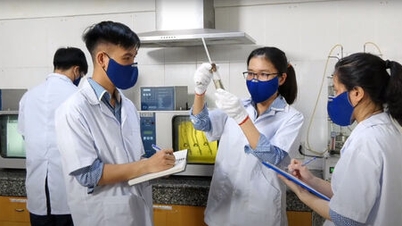



















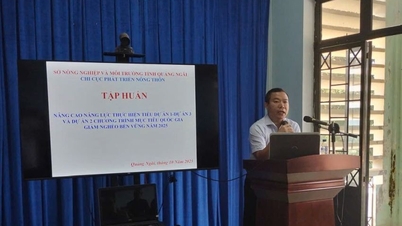


















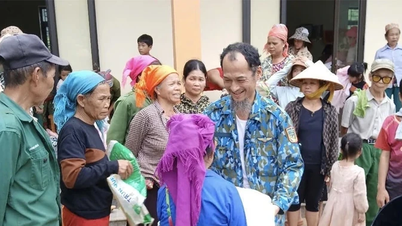







































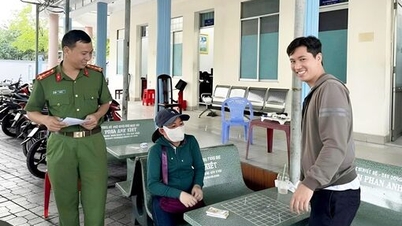





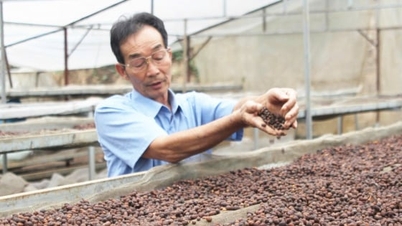






Comment (0)